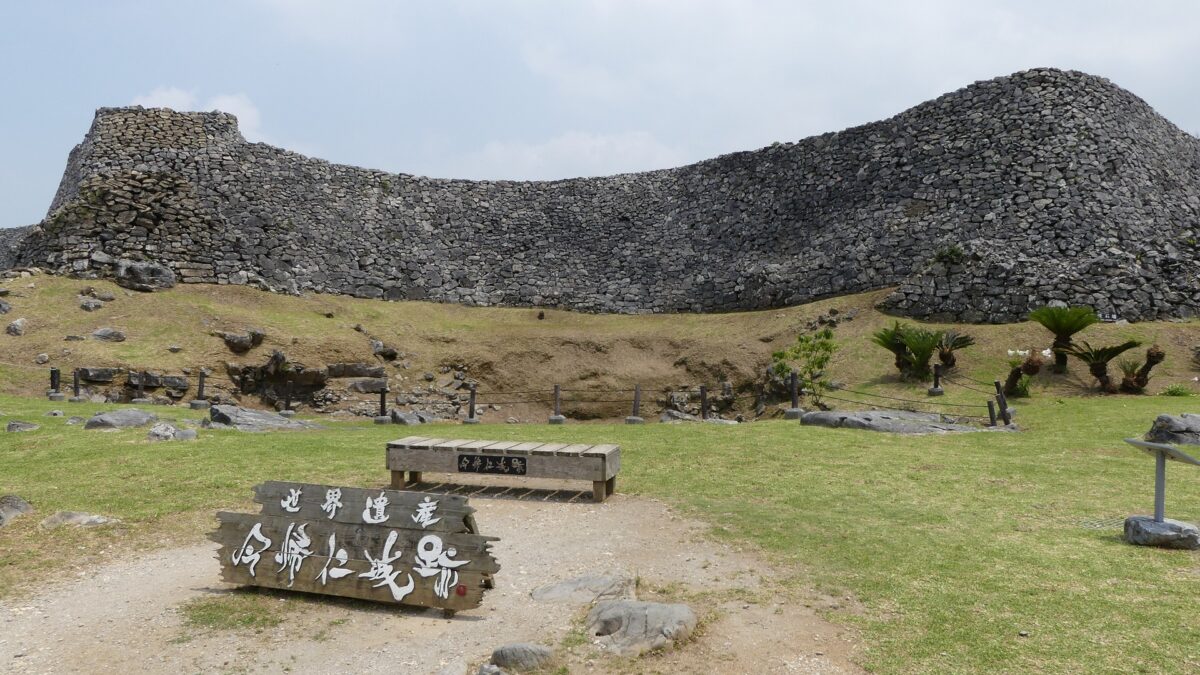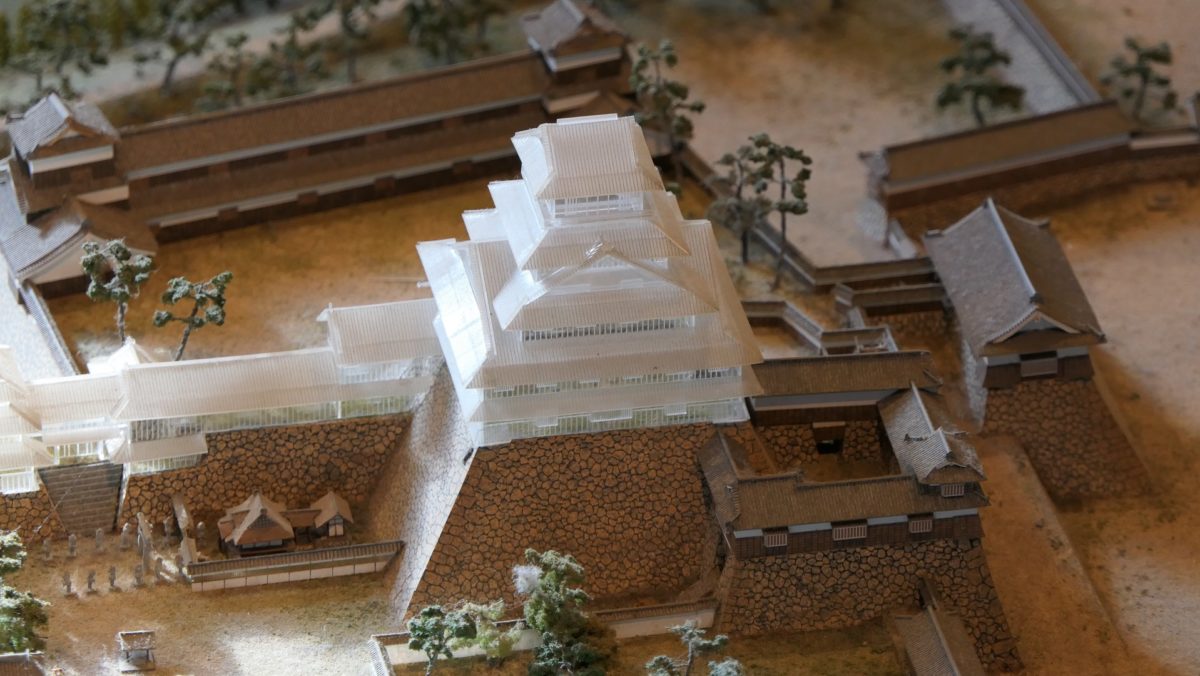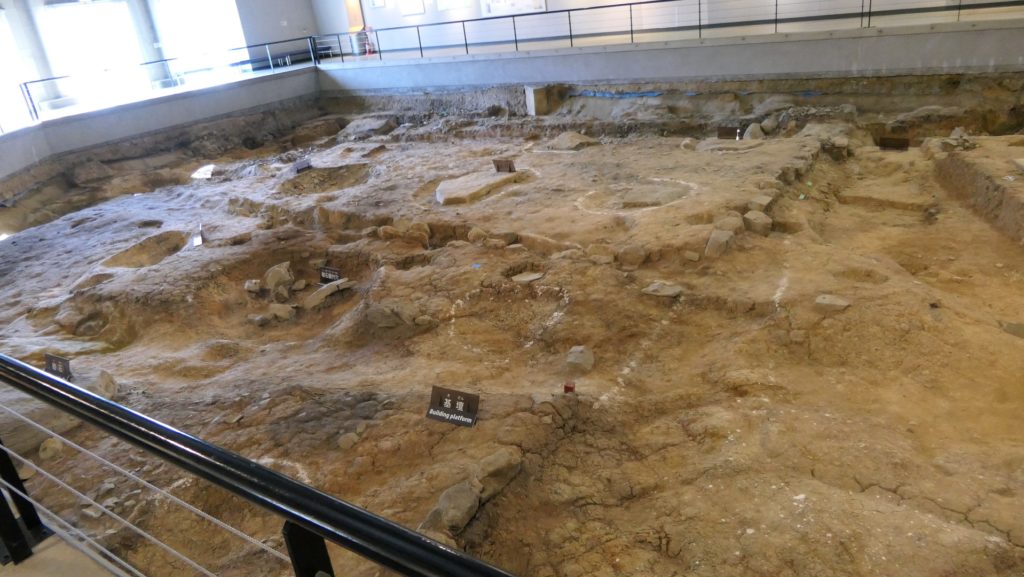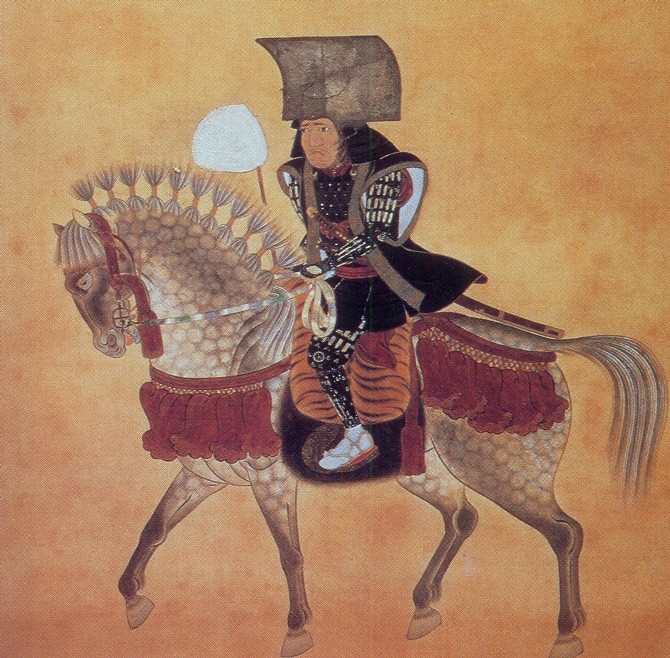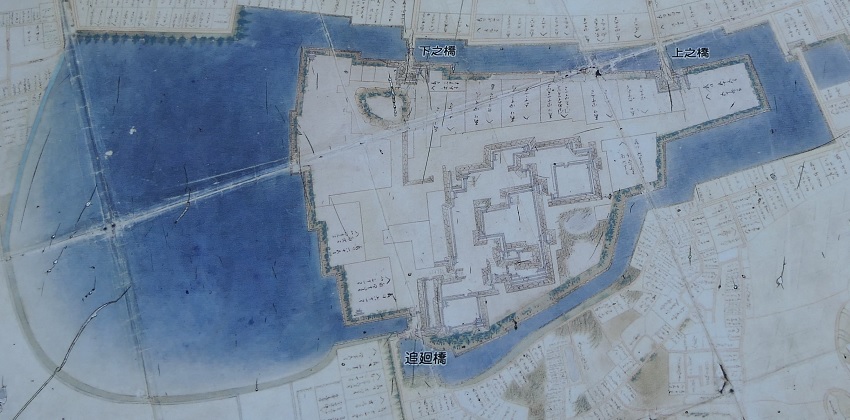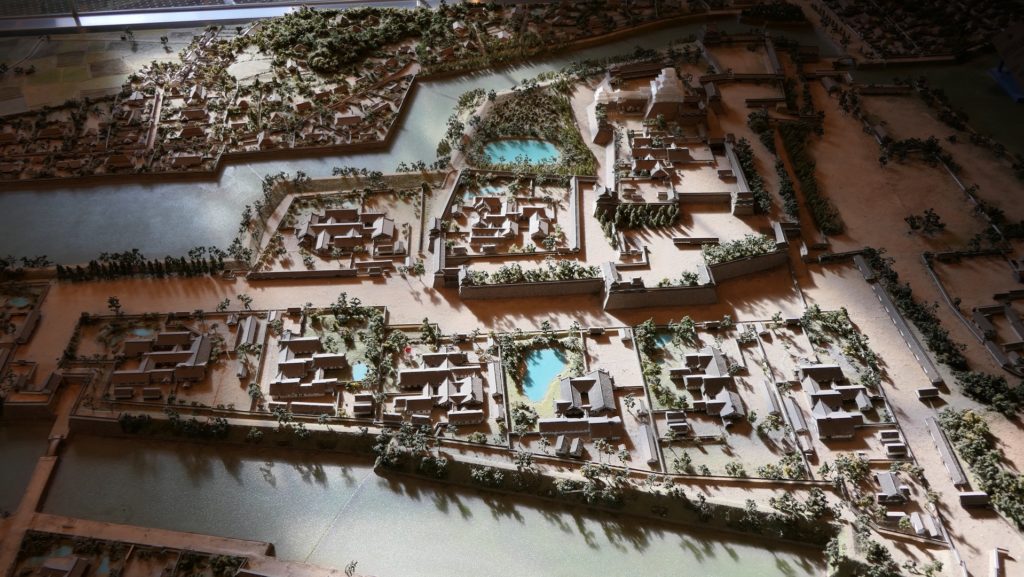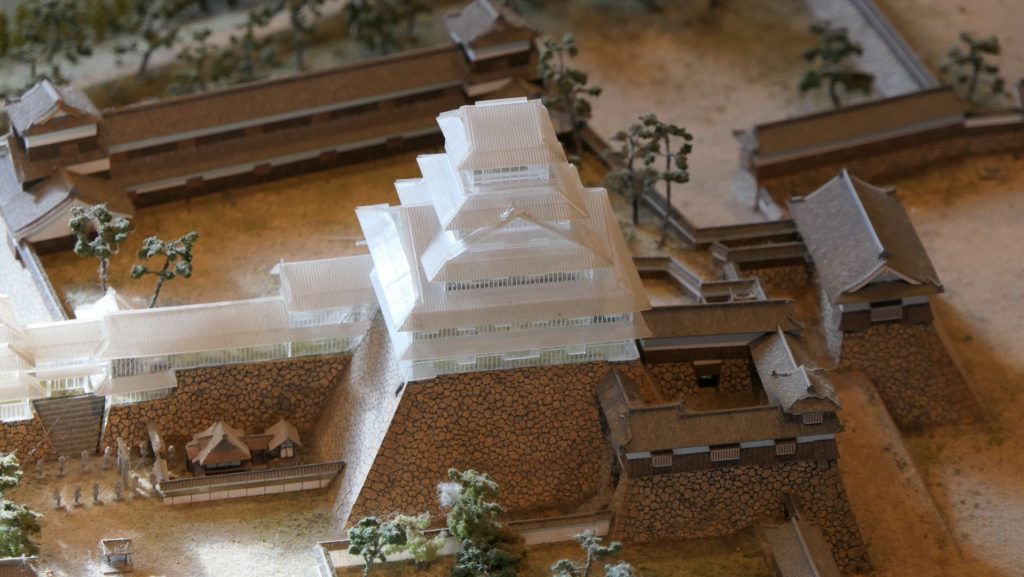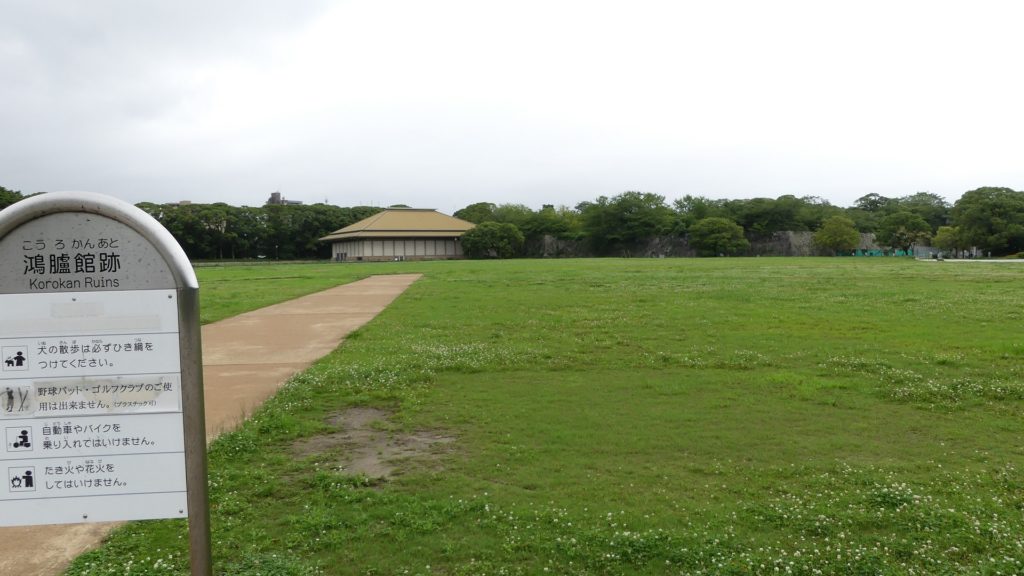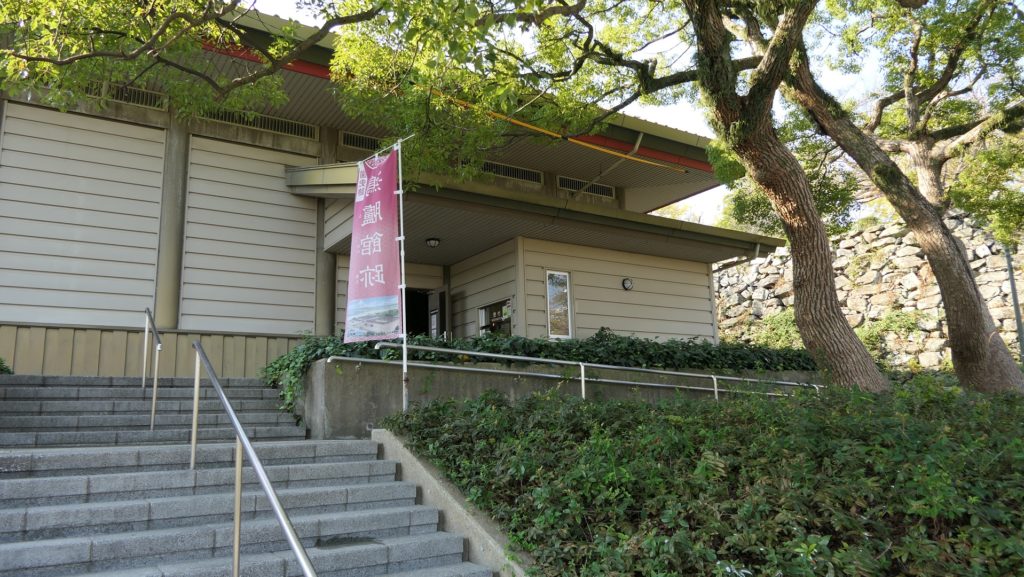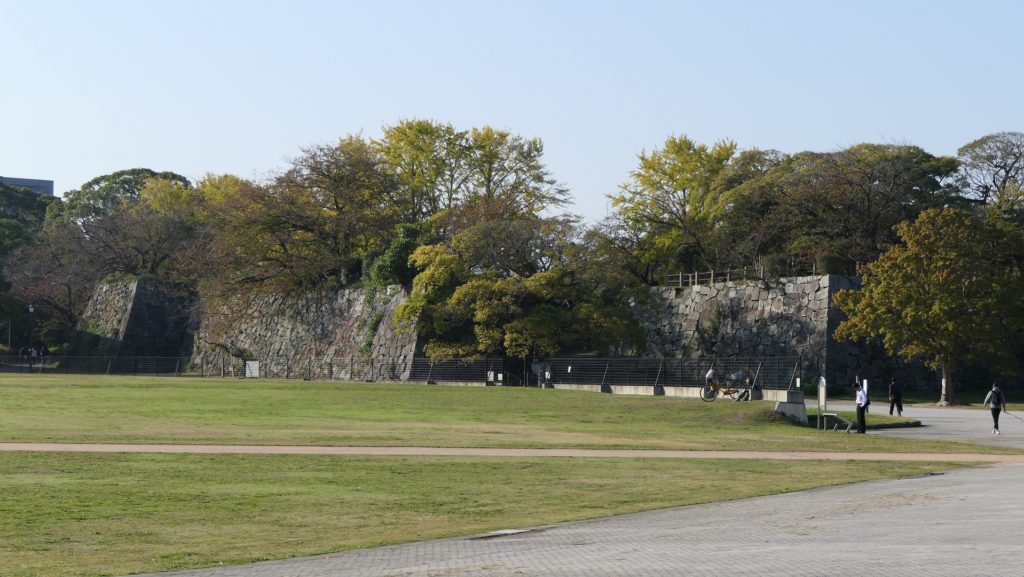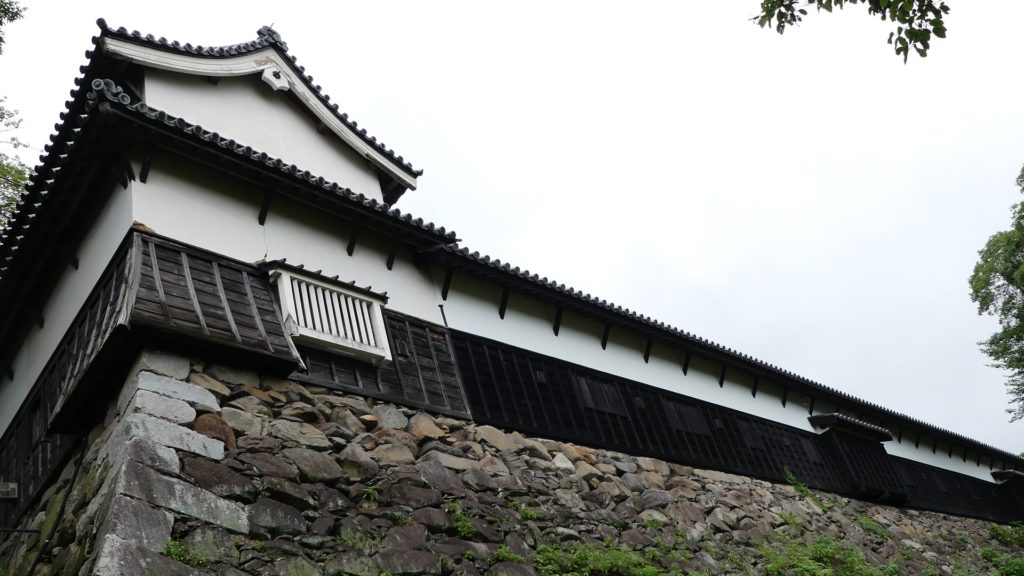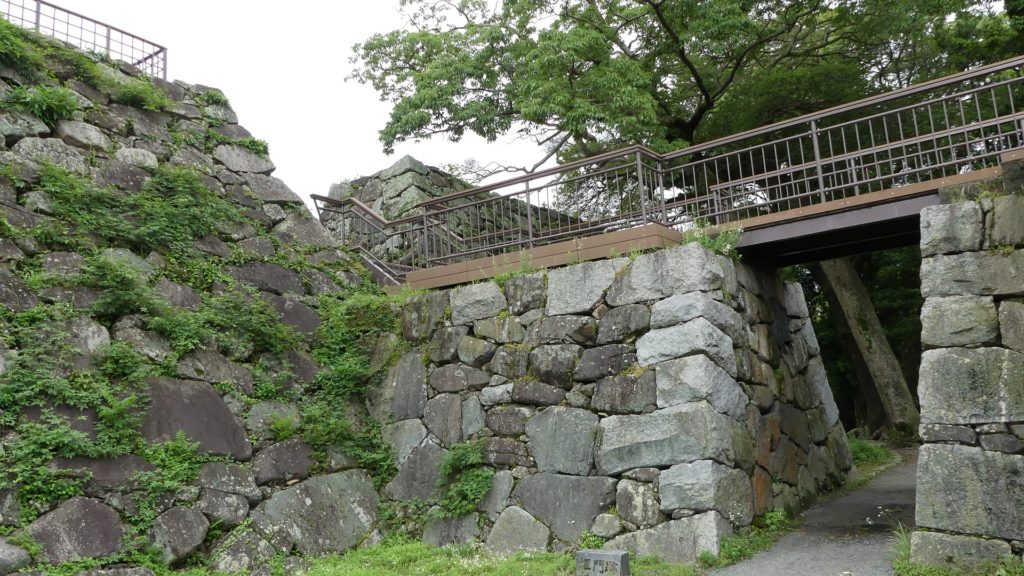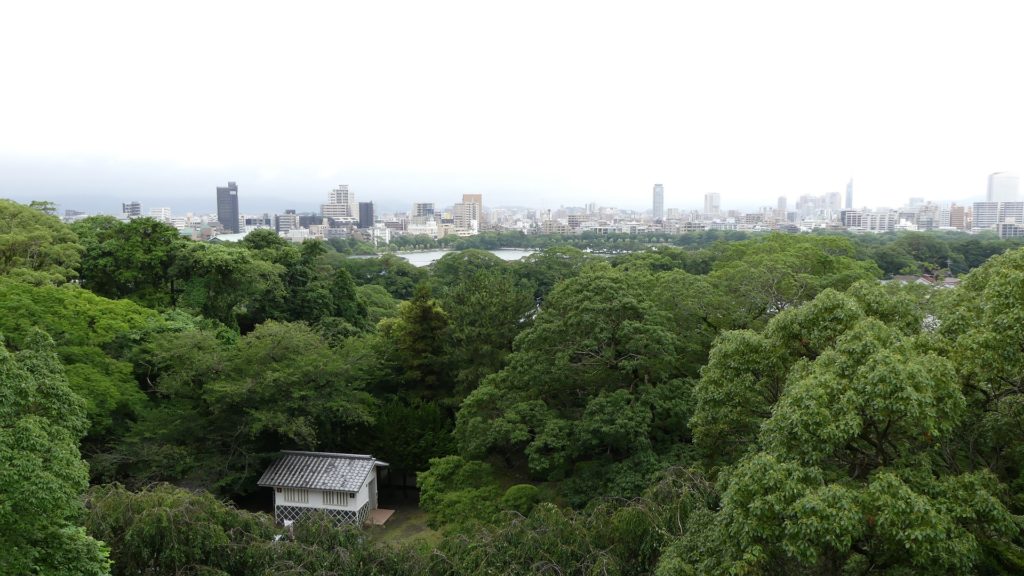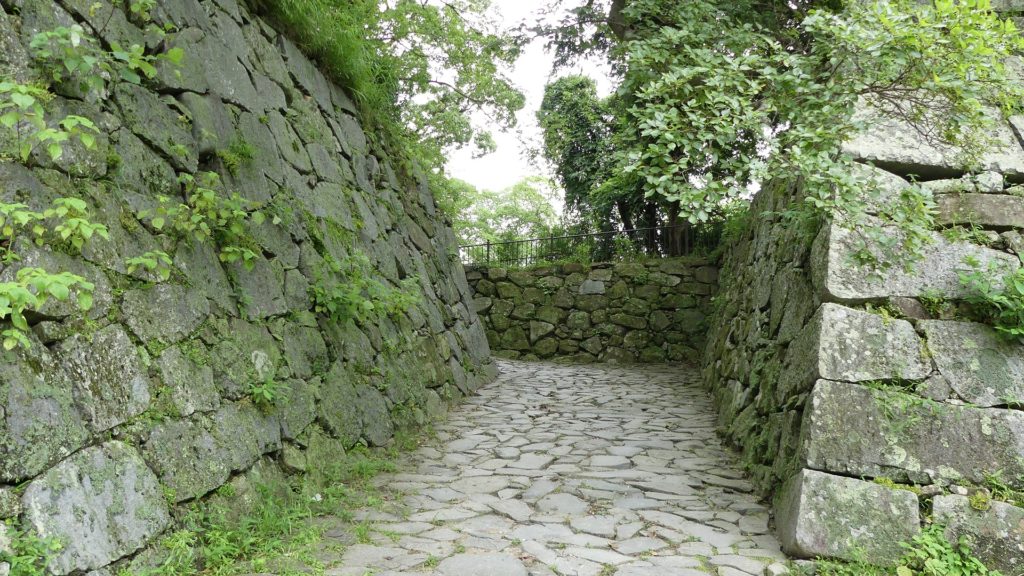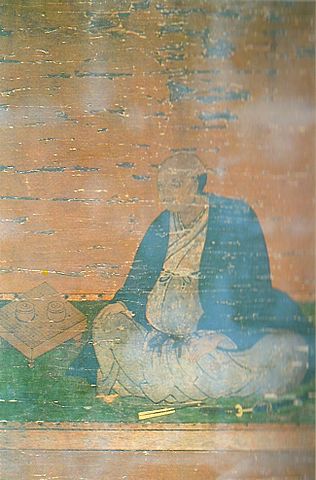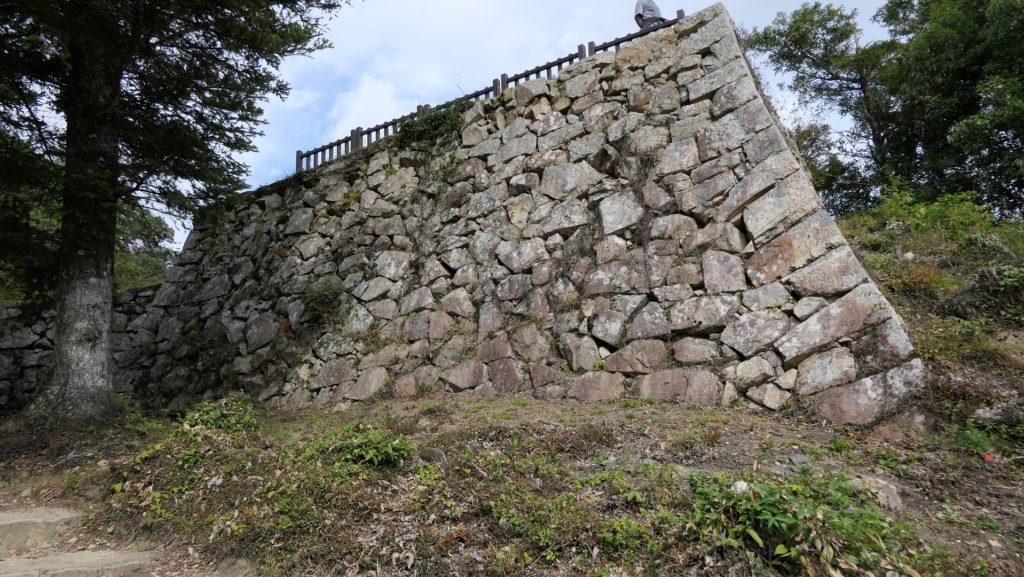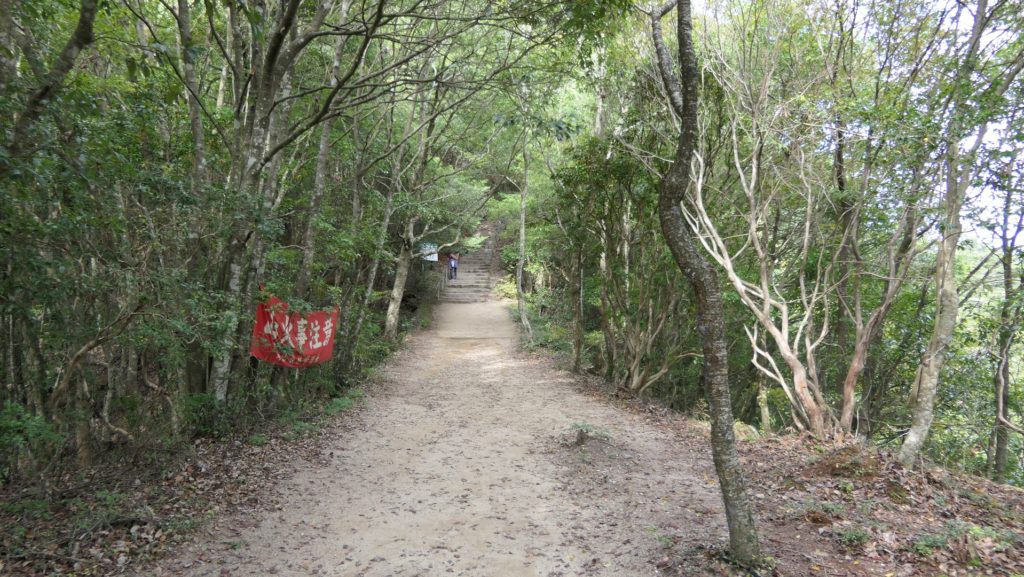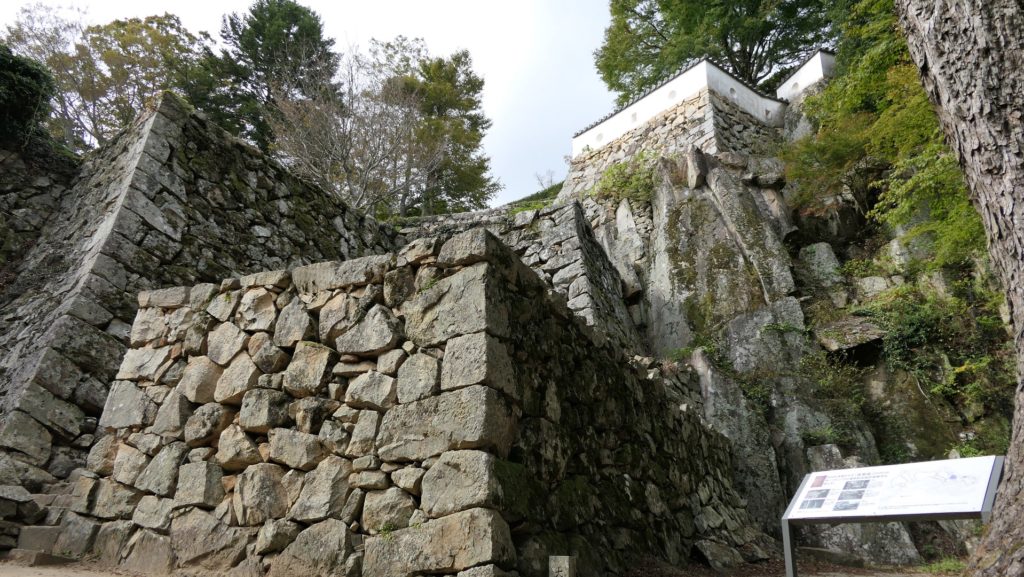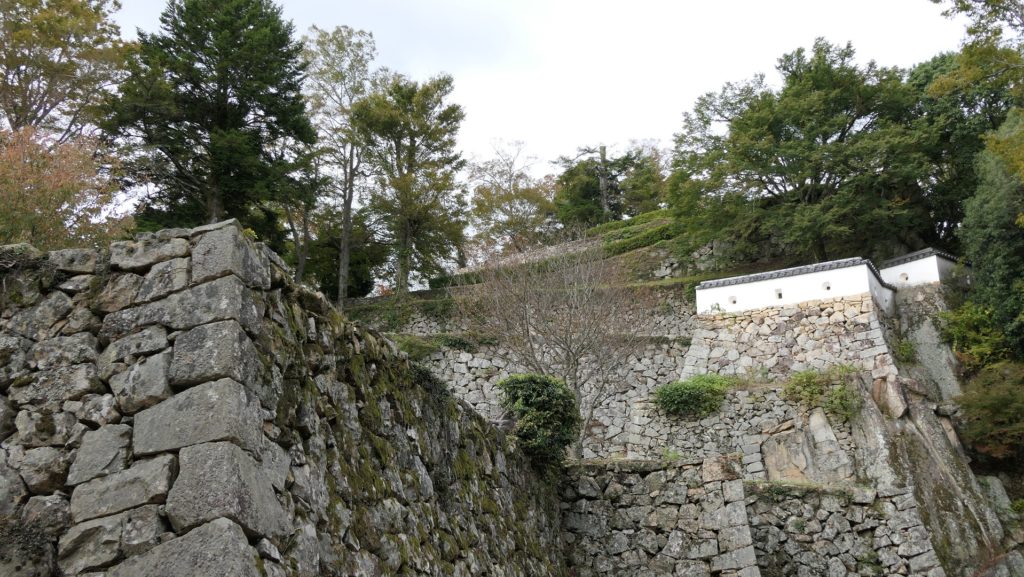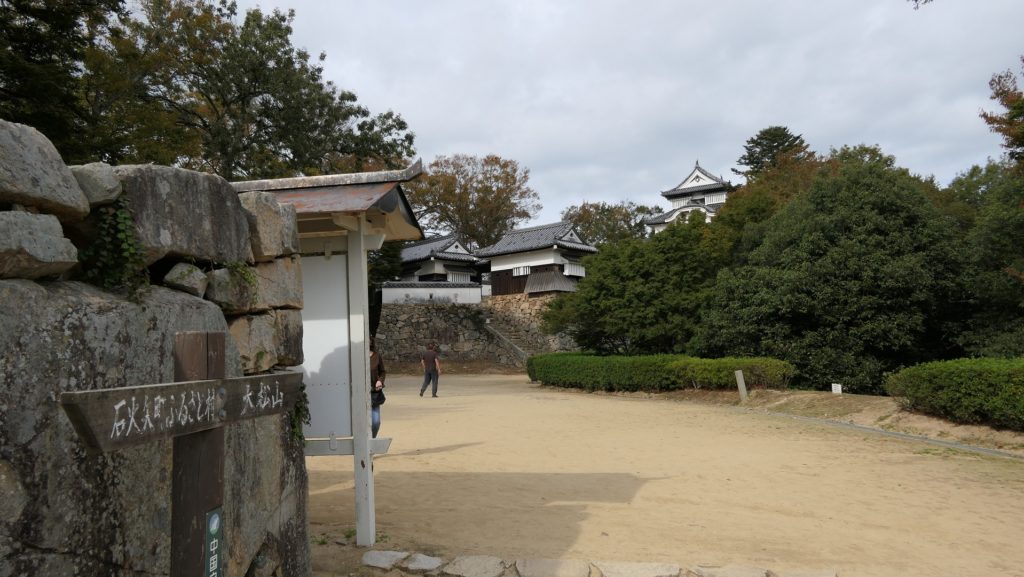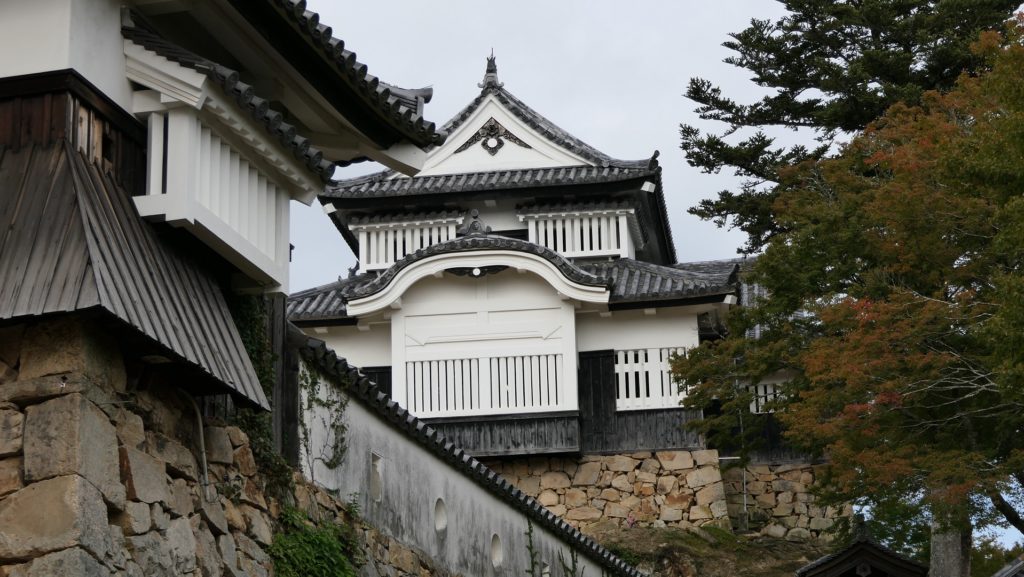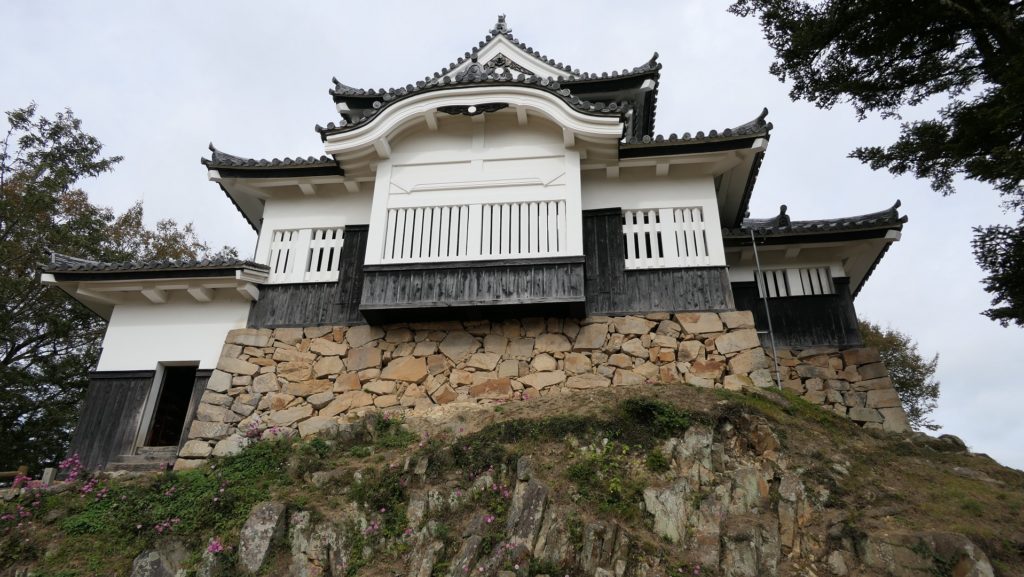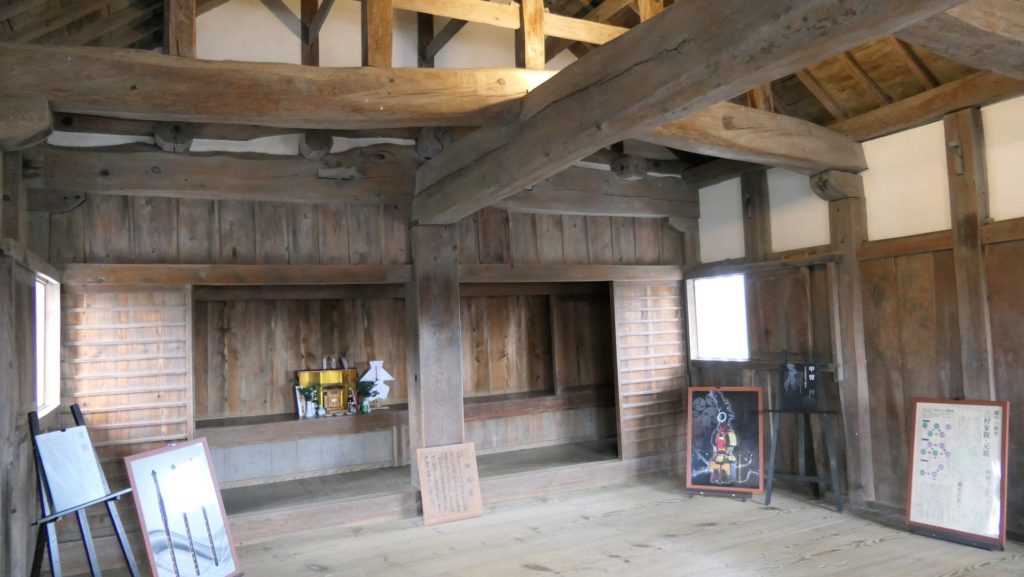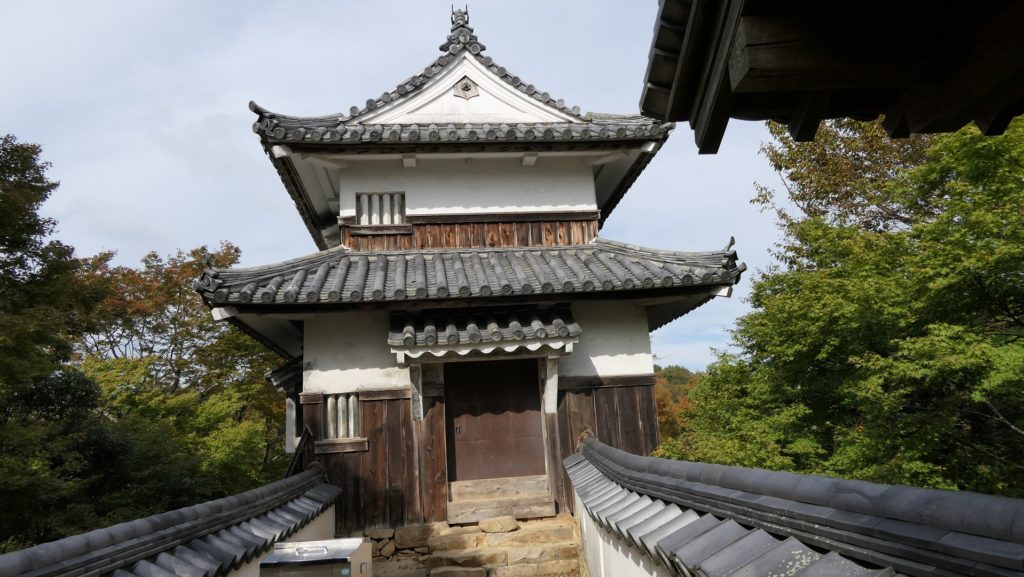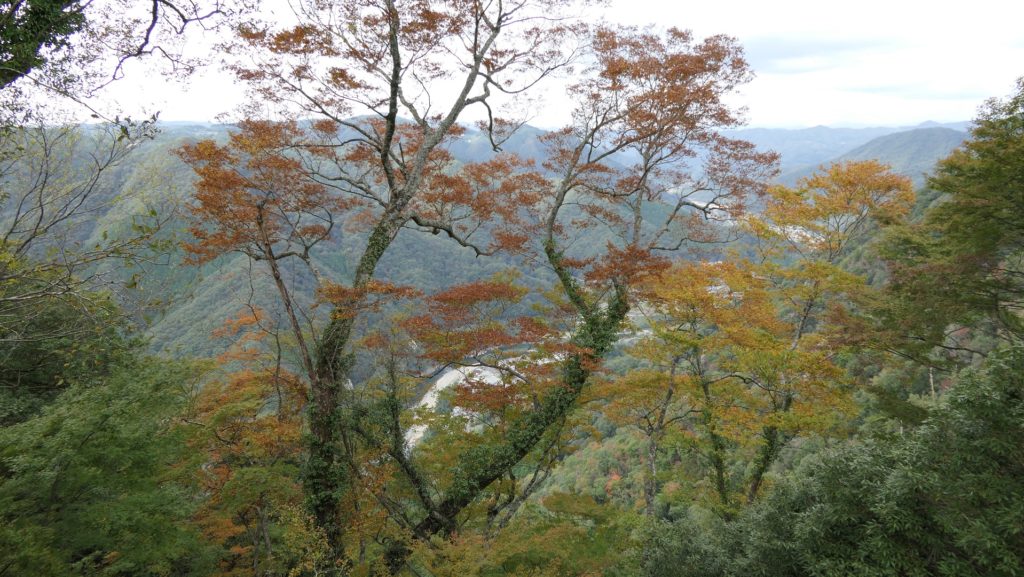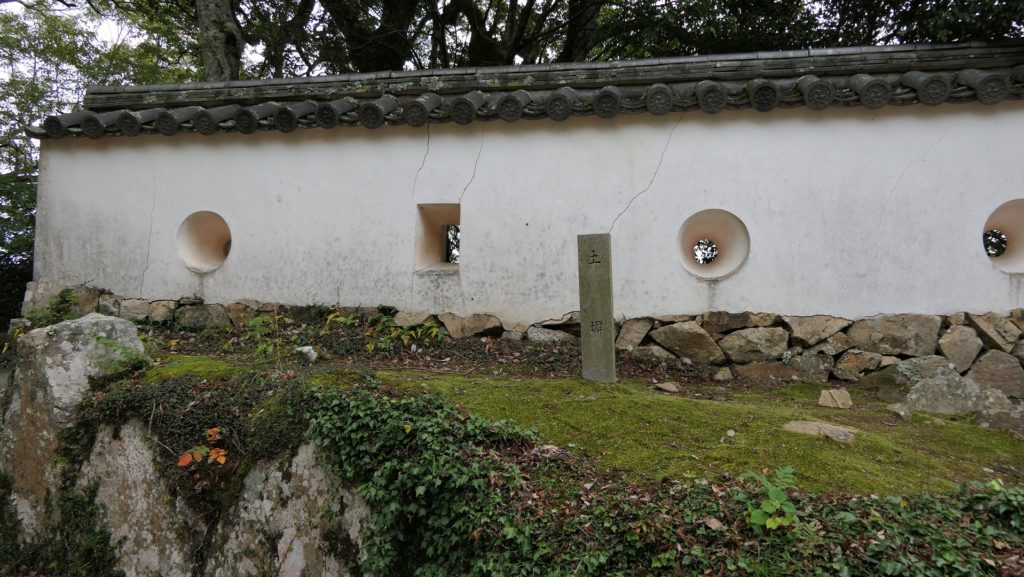立地と歴史~Location and History
北山王国の首都~Capital of Hokuzan Kingdom
14、15世紀頃、琉球諸島(現在の沖縄諸島)は貿易により栄えました。その結果、「按司」と呼ばれる多くの有力な豪族が中国や他国と貿易を行い、力をつけていきました。彼らは「グスク」と呼ばれる大規模な要塞を琉球諸島周辺に300以上築きました。やがて「北山」「中山」「南山」のという3つの王国にまとまっていきます。今帰仁城は北山王国の首都でした。
Around the 14th and 15th centuries, the Ryukyu Islands (what is now Okinawa Islands) prospered thanks to trading. As a result, many powerful clans in Ryukyu called “Aji” traded with China and other countries, and had great power. They built over 300 large-scale fortresses called “Gusuku” around the Ryukyu Islands. They eventually gathered three large groups called the Kingdoms of “Hokuzan”, “Chuzan”, and “Nanzan”. Nakijin Castle was the capital of the Hokuzan Kingdom.
発掘の成果によれば、この城は最初は14世紀の初め頃、沖縄本島北部の本部半島にある、100mの高さの丘の上に築かれました。しかし当初は丘の上の平地を柵で囲っただけだったようです。その後、北山王国の勢力が高まるにつれ、城は拡張され、15世紀までに正殿や長大な高石垣が築かれました。中国の古書には、この城や王国から中国への朝貢があったことが記録されています。当時の中国製陶器の破片が遺跡から発掘されています。
According to the excavation, the castle was first built on a 100m high hill in Motobu peninsula of the northern Okinawa Island around the beginning of the 14th century, but it was just plane area on the hill which was surrounded by fences. After that, the castle was developed with the main palace and long, high stone walls being built until the 15th century, while the power of the Hokuzan Kingdom grew. An old Chinese book records the castle and the kingdom bringing a tribute to China. Peaces of Chinese potteries at that time are also unearthed from the ruins now.

2度の落城~Castle fell twice
最盛期にはこの城は、後に琉球王国になる中山王国の首都にある首里城に匹敵する規模となりました。ところが、城はそこから2度落城します。1416年、中山王国の家臣である護佐丸がこの城を攻撃しました。最後の城主、攀安知(はんあんち)は城外で護佐丸と戦いますが、彼の部下である本部平原(もとぶていはら)の裏切りに合い敗れてしまいます。それ以来、城は琉球王国のものとなり、島の北部を治めるために「監守」と呼ばれる行政官が置かれました。
At its peak time, the castle became as large as Shuri Castle, the capital of the Chuzan Kingdom, the later Ryukyu Kingdom. However, the castle fell twice after the peak. In 1416, a retainer of Chuzan Kingdom, Gosamaru attacked the castle. The last lord of the castle, Han-annchi fought with Gosamaru outside the castle, but his retainer, Teihara Motobu betrayed him, and he was lastly beaten. Since then, Ryukyu Kingdom owned and stationed an administrator called “Kanshu” in the castle to govern the northern part of the island.
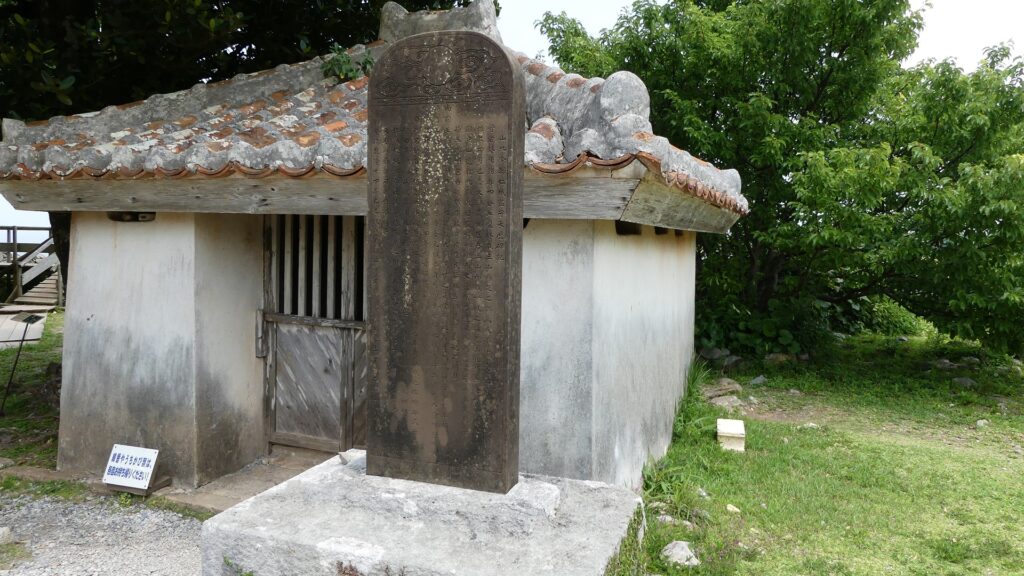
1609年、薩摩の武士たちが琉球王国に侵攻したとき、真っ先にこの城を占領し焼き払いました。侵攻後、王国は薩摩の支配下に置かれますが、この城には領主は置かれませんでした。その代わりに沖縄の人々が城を祈りの地として維持したのです。
In 1609, when the Satsuma warriors invaded Ryukyu Kingdom, they first captured and burned the castle. The kingdom was under the control of Satsuma after the invasion, but the castle had no lord. Instead, the people of Okinawa maintained the castle as a spiritual center.

特徴~Features
城跡に入る~Entaring the castle ruins
現在、今帰仁城跡は素晴らしい景色と自然の中に位置しています。城跡の近くには便利な施設もあります。グスク交流センターでは、城跡へのチケットを買ったり休憩することができます。また、歴史文化センターでは、城やその周りの地域のことをより深く学ぶことができます。
Now, the ruins of Nakijin Castle are located in wonderful views and nature. There are also useful facilities near the ruins. One of them is the Gusuku Exchange Center where you can buy a ticket to the ruins and rest. The other is the History & Culture Center where you can learn more about the castle and the area surrounding it.
城跡の入口に歩いていくと、見事な曲線を描いた高石垣が目に入っていきます。この石垣は大隅(ウーシミ)の城壁と呼ばれ、高さが8mあり、この城の中では最も高いものです。城の守備兵は、曲線の頂点部分から敵に対して反撃することができました。城跡ガイドの方は、この石垣は中国の万里の長城に影響されていると説明しています。観光客は、現在石垣の脇にあるアーチ門を通って城跡に入っていきます。この門は1962年に復元されたものです。
When you walk to the entrance of the ruins, you will see finely curved high stone walls. They are called Ushimi Stone Walls and 8m high, the highest ones in this castle. The defenders of the castle could counterattack enemies from the top of the curve. The Guides of the ruins say that the walls were inspired by the Great Wall of China. Visitors will now enter the ruins through the arch gate beside the stone walls which was restored in 1962.


石の階段が城の中心部に向かって伸びていますが、これは最近になって観光用に作られたものです。旧道が階段の右側に沿って残っています。敵からの攻撃から守るため、狭く、急で、岩がごつごつした道になっています。
The stone steps go straight to the center of the castle, but they were built recently for tourism. The Old Pathway goes along on the right side of the steps. It is a narrow, steep and rocky path for defense against attacks in the past.


城の中心部~Center of Castle
城の中心部は3つの部分に別れています。「大庭(ウーミャ)」は入口に最も近い場所であり、行事の際に使われた広場です。行事のために正殿、北殿、南殿といった建物がありました。次の場所は、「御内原(ウーチバル)」で城で奉仕する女性たちが住んでいました。ここはまた城の中では神聖な場所でした。現在では、ここから北の方角に素晴らしい海の景色が望めます。最後は「本丸」で、恐らくは城主が住んでいた場所です。発掘によっていくつもの建物があったことがわかっています。
The center of the castle has three parts. “Umya” Court is the first part from the entrance, which is was used as the square for ceremonies. There were the Main, North, and South Palaces for the ceremonies. The next part is called “Uchibaru” Ground where the women who served the castle lived. It is also a very religious place for the castle. You can now have a great view of the sea in the northern direction. The last part is the Main Enclosure or “Honmaru” where the lord of the castle probably lived. The excavation found that several buildings had been built.



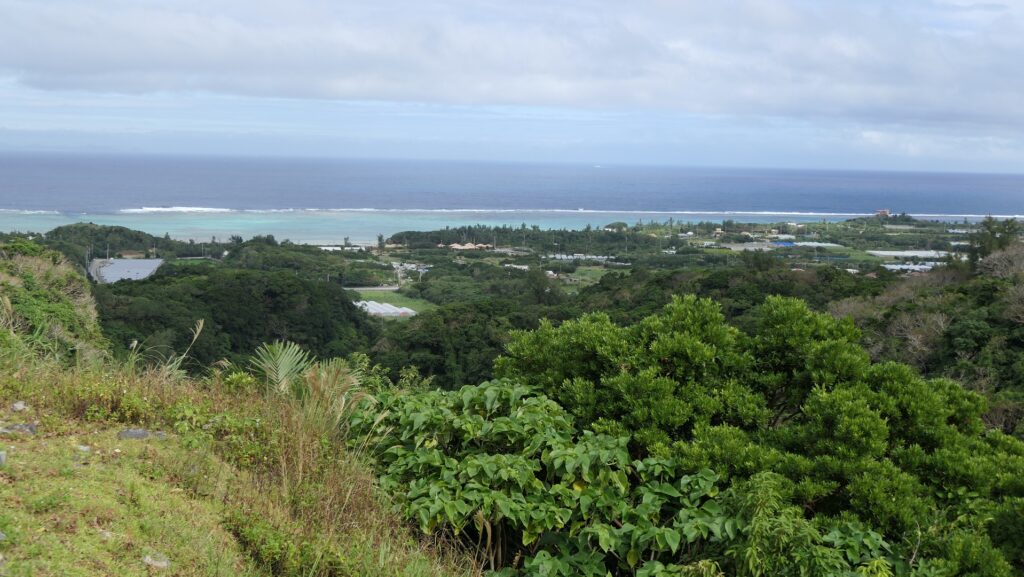
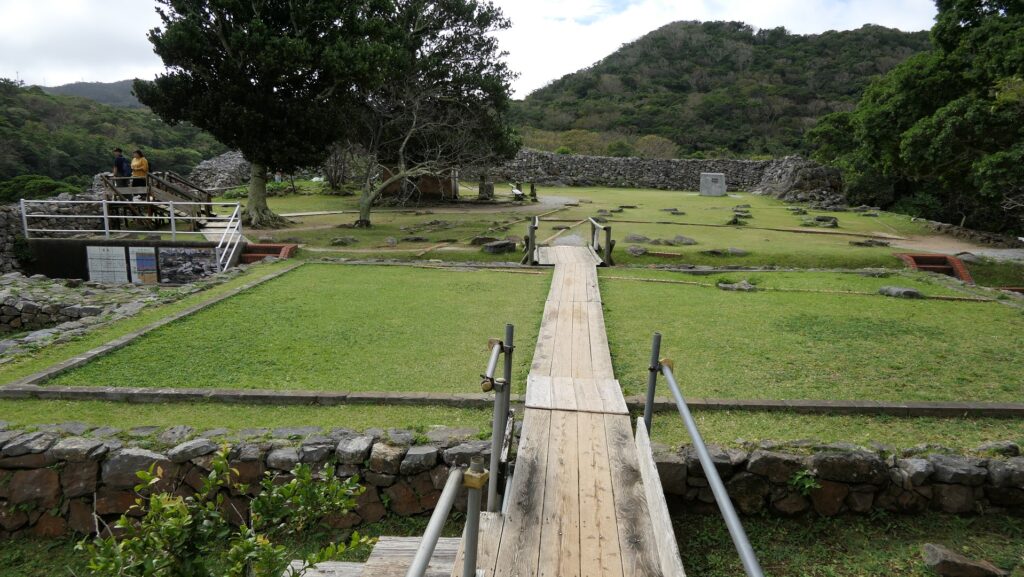
背後にある郭~Enclosure in Back
中心部からは、城の背後の部分が見え、そこに行くこともできます。「志慶真門郭(しげまじょうかく)」と呼ばれる場所で、ここもまた、長大な石垣に囲まれています。城主に仕える人たちが住んでいたと考えられています。この郭に降りていくときには、古石灰岩でできた石垣を間近に見ることができます。
You can see and go to the back of the castle from the center. This is called “Shigema-jokaku” Enclosure which is also surrounded by high, long stone walls. It is thought that the closest subjects who served the lord lived at the enclosure. You can also see the walls made of Paleozoic lime stones closely when you go down to the enclosure.



その後~Later History
第二次世界大戦で破壊された他の遺跡と異なり、今帰仁城跡は今に残りました。沖縄戦の戦場からは遠かったからです。戦後、城跡は1972年に国の史跡に指定されました。ついには、2000年から琉球王国のグスク及び関連遺産群として世界遺産に登録されています。
The ruins of Nakijin Castle remained though many other ruins were destroyed during World War II, as they were far away from the battlefields of Okinawa. After the war, they were designated as a National Historic Site in 1972. Lastly, they have also been on the World Heritage List as Gusuku Sites and Related Properties of the Kingdom of Ryukyu since 2000.
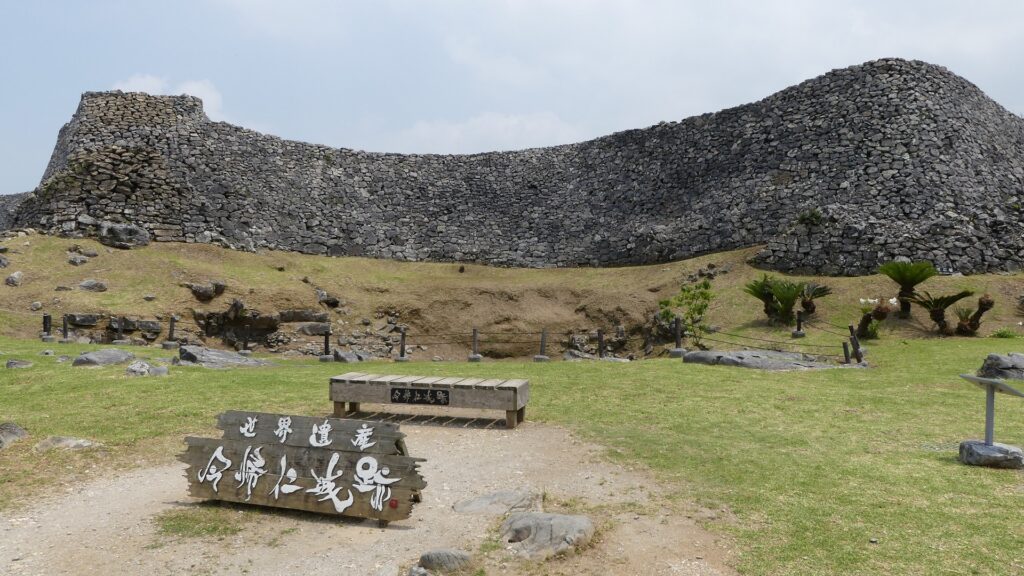
私の感想~My Impression
私が初めて今帰仁城の石垣を見たときは、ただ単に石を積んであるだけのように見えました。日本の本土にある石垣は通常土か細かい石の芯の部分を覆って築かれます。その一つの理由は本土は地震が多く発生するので、石垣は強固な中心部分が必要だからでしょう。沖縄にはあまり地震がありませんが、雨が多く降ります。今帰仁城のような沖縄の城の石垣は雨を素通りさせます。後からその違いの理由を学びました。いすれにせよ、素晴らしい石垣を持つこの城跡は、沖縄の自然とよくマッチしています。
When I saw the stone walls of Nakijin Castle for the first time, they looked like the stones are just piled simply. This is because stone walls in the Mainland of Japan are were usually built covering their core of soil or small pieces of stone. One of the reasons for it this is that the Mainland often suffers from earthquakes, so stone walls needs a strong core. On the other hand, Okinawa has few earthquakes, but has a lot of rain. The stone walls of Okinawa’s castles like Nakijin can make rain slip through. I learned the reason for the difference later. Anyway, I think the ruins with elegant stone walls match the nature of Okinawa.
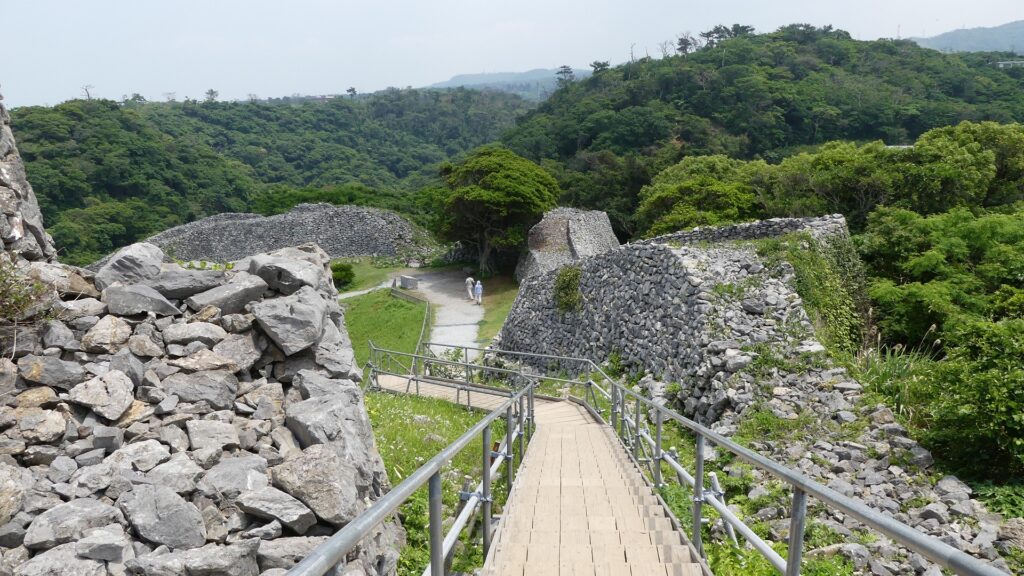
ここに行くには~How to get There
ここには車で行かれることをお勧めします。
那覇空港から:
車の場合、那覇空港自動車道に名嘉地ICから入り、西原JCTで沖縄自動車道に合流し、許田ICで降りてください。城跡はそこから30分程かかり、城跡周辺に駐車場があります。
バスの場合は、運天港行きのやんばる急行バスに乗ってください。空港から約2時間半かかりますが、城跡近くの今帰仁城址入口バス停で降りてください。
I recommend you to visit it by car.
From the Naha Airport:
By car, enter Naha Airport Expressway at the Nakachi IC, join Okinawa Expressway at the Nishihara JCT, and get off the expressway at Kyoda IC. The ruins are about 30 minutes away from the IC. There are parking lots around the ruins.
By bus, you can take the Yanbaru Express Bus bound for Unten Port. It takes about 2.5 hours from the airport to the Nakijin-joshi-iriguchi bus stop near the ruins.
リンク、参考情報~Links and References
・世界遺産 今帰仁城跡(Officisl Website)
・「列島縦断「幻の名城」を訪ねて/山名美和子著」集英社新書(Japanese Book)
・「琉球王国、東アジアのコーナーストーン/赤嶺守著」講談社(Japanese Book)

